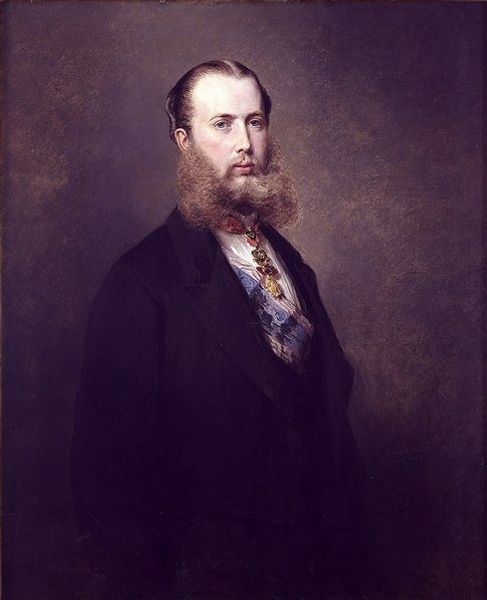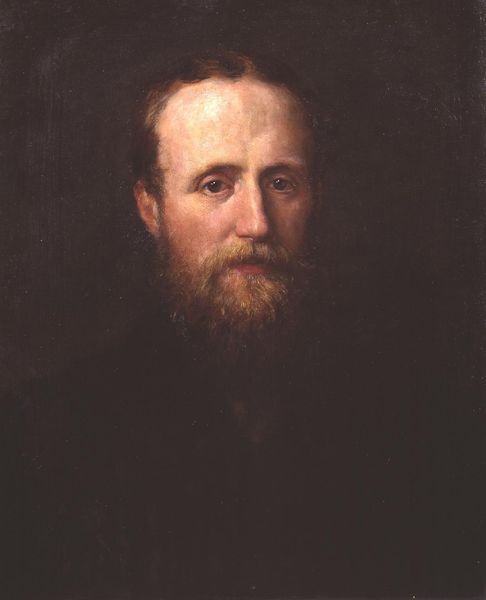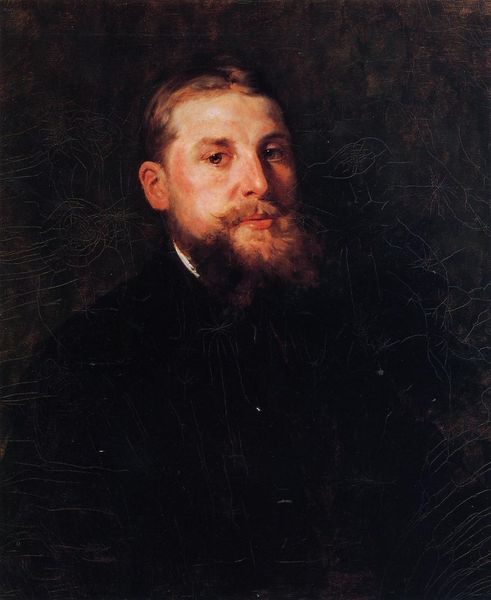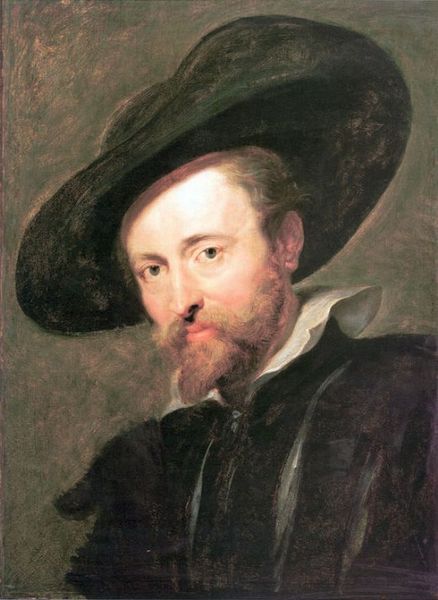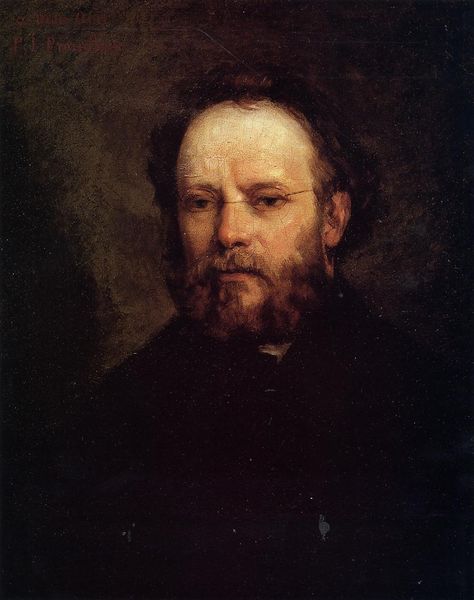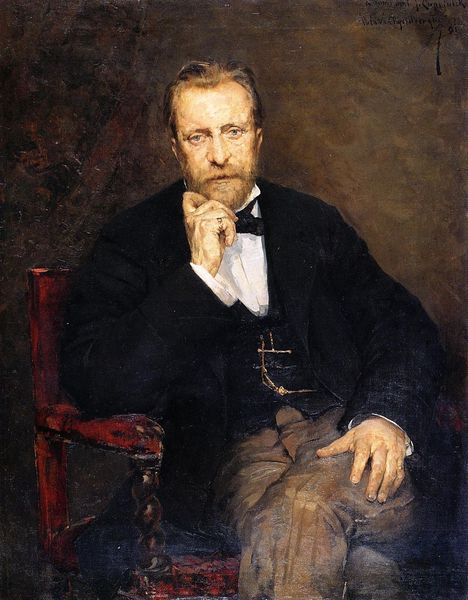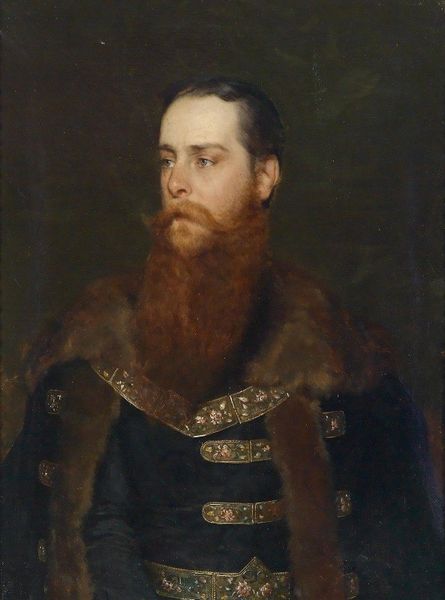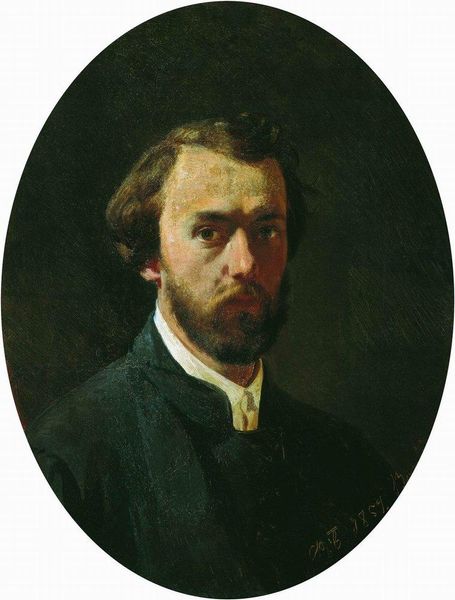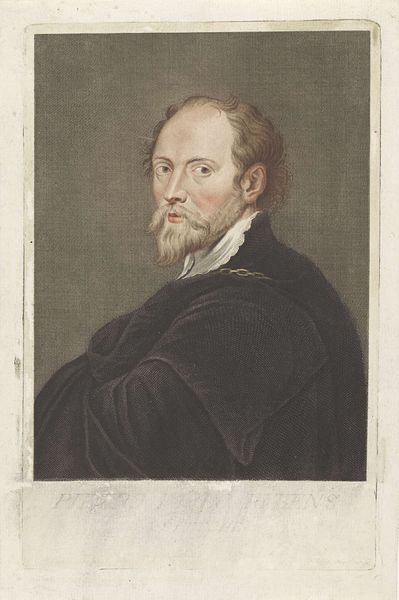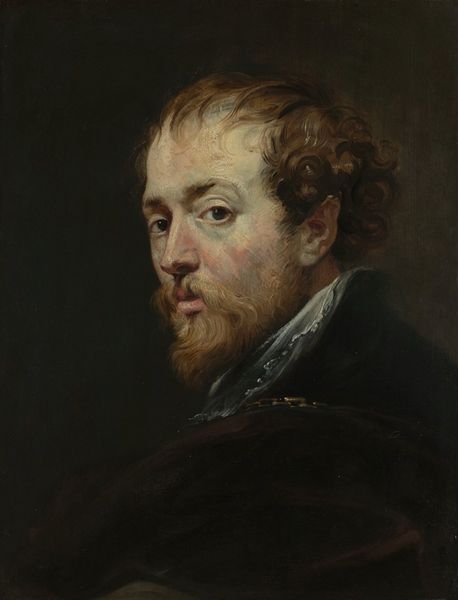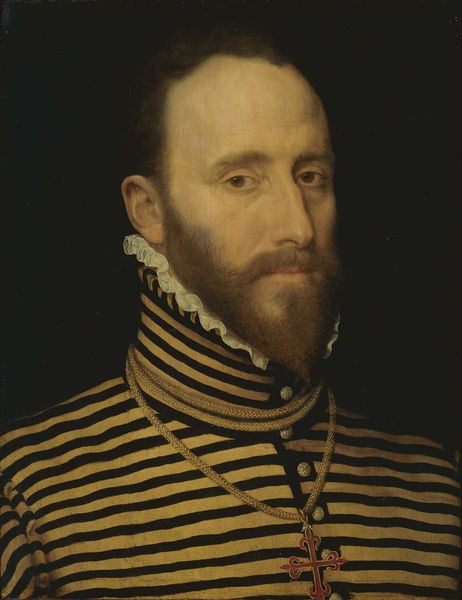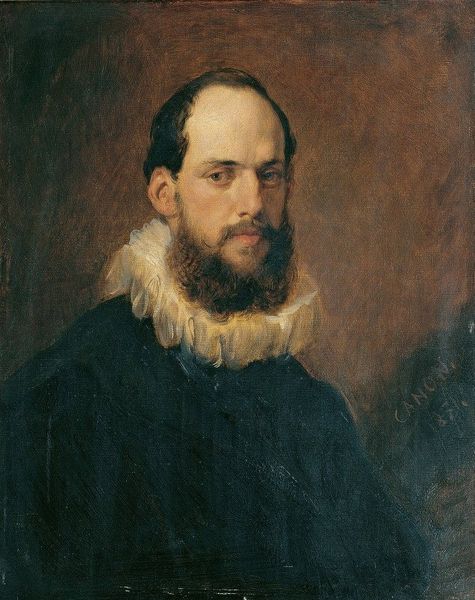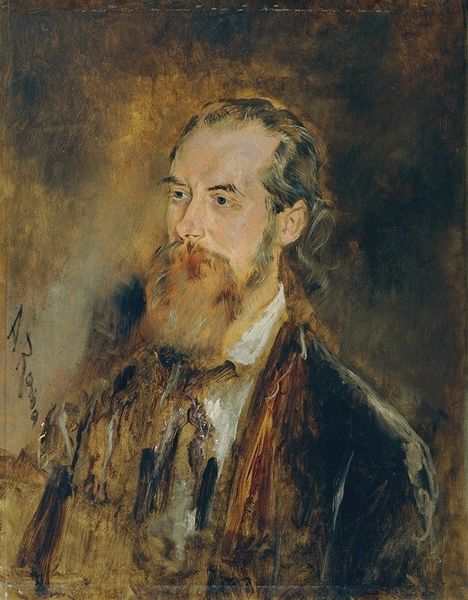
painting, oil-paint
#
portrait
#
self-portrait
#
baroque
#
painting
#
oil-paint
#
figuration
#
academic-art
Copyright: Public domain
Peter Paul Rubens painted this self-portrait in oil to immortalize himself. The gaze, direct and unwavering, is a symbolic key. Through it, Rubens asserts his presence. This assertive gaze echoes across centuries, reminiscent of Roman portrait busts, emblems of authority and enduring legacy. But in Rubens's hands, it evolves. We see the confidence of the Renaissance man melded with the burgeoning self-awareness of the Baroque era. Consider how this direct gaze surfaces later. Think of Rembrandt, whose self-portraits similarly fix the viewer, challenging us to meet his gaze, inviting introspection. The very act of looking becomes a potent symbol, a mirror reflecting our own psyche. These eyes speak to us, engaging on a subconscious level. The evolution of such symbols is not linear, but a cyclical progression. They resurface, evolve, and take on new meanings across time.
Comments
No comments
Be the first to comment and join the conversation on the ultimate creative platform.
